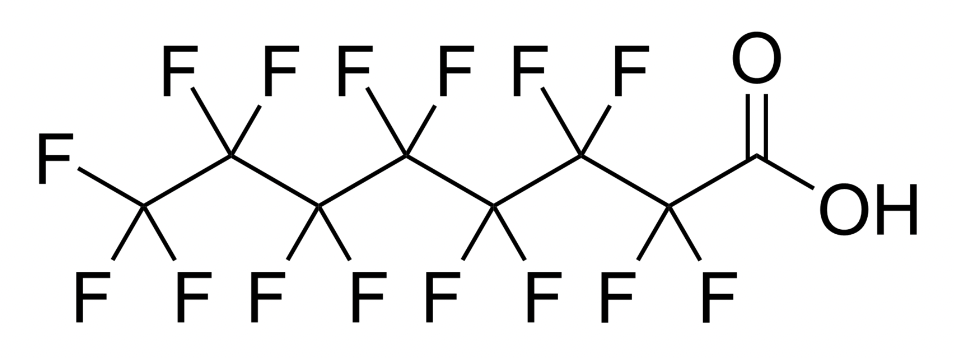Why Do We Care About PFAS? Because of the World–and Us
Recent regulations bring chemical makeup to the surface
There’s been quite a bit of attention recently on PFAS–for good reason.
In the U.S., the EPA released final rules and standards for the control and monitoring of certain PFAS–otherwise known as forever chemicals–in drinking water. This news marks important early steps toward protecting human and environmental health from these man-made compounds.
So, what are PFAS and why do we seem to care about them more than ever? PFAS is an acronym for per- and polyfluoroalkyl substances. The PFAS class includes more than 15,000 compounds, all characterized by a backbone of carbon atoms linked to fluorine atoms, which give them the ability to withstand moisture, oils and chemical attacks, plus act as excellent electric insulators. Since their discovery in the 1930s their use has skyrocketed. One most people are familiar with is Teflon, or PTFE. Until recently, PFAS were added to firefighting foam and to pizza boxes(among other food wrappers,) and are still found in products such as clothing, food packaging, inks, paints and building products. It is common to find PFAS in coatings of many products, since they can protect against water or stains.
PFAS’ chemical stability, ability to move around the environment, and widespread use and large production (280,000 metric tons in the U.S. alone as of 2019 and 4.4 million metric tons estimated to enter the environment in the next 30 years) are why PFAS pose such an environmental concern. They are hard to destroy, so their chemical stability gives them the shorthand of “forever chemicals.”
Today, PFAS can be found pretty much everywhere, including remote Arctic and Antarctic regions. Production plants can emit PFAS, and because of their widespread use in household products, wastewater can have significant amounts of PFAS that can eventually make it to drinking water supplies, where concentrations in the parts per trillion level (nanograms per liter) may be deemed concerning. PFAS also bioaccumulate – that is, their concentration grows inside organisms (as demonstrated in fish and edible crops) upon continuous exposure – and also in humans.
For humans, studies indicate deleterious health effects such as changes in cholesterol, metabolism, liver problems and endocrine disruption. The International Agency for Research on Cancer (IARC) recently cataloged PFOA as “carcinogenic to humans.” Nearly all humans have PFAS in their bodies, and occupational exposure in their production process as well as in certain groups such as firefighters and ski waxers may run much higher. There is no “safe” level of PFAS consumption and what has been considered “tolerable” has been reassessed. For instance, in 2020 the European Food Safety Authority (EFSA) set a ‘tolerable intake’ of four of the most studied PFAS to 4.4 nanograms per kilogram of body weight per week, a 95% reduction from its prior recommendation. In terms of risk, the IARC has only cataloged the cancer potential of two PFAS. It doesn’t mean that the rest of the 30,000+ PFAS are not carcinogenic, it only means that our current process of toxicological assessments is very slow to act.
Governments are attempting to reduce the exposure to certain PFAS through drinking water rules and directives. The recent EPA rule limits six PFAS in drinking water, and the EU Drinking Water directive also sets a threshold limit to all PFAS. Technologies to remove certain PFAS from drinking water do exist, mainly based on carbon filtration, ionic exchange and reverse osmosis. If the municipal water may be subject to concerning levels of PFAS, it is likely that some action is being taken to meet new rules (as states may have already placed certain restrictions in advance of federal regulation). Those who use well water as their drinking supply source may find products that are certified to remove certain PFAS. In the U.S., the US Geological Survey (USGS) recently conducted a thorough survey of PFAS production facilities and sampling of certain PFAS in drinking water, which helps identify locations or water supplies where targeted help for removal may be needed.
While removal from water is possible, removed PFAS will still be in the filtered material and there’s little we can do to destroy these pollutants, as even the incineration of PFAS may end up producing smaller PFAS. At some point, we need to reconsider our widespread use of PFAS so at least we don’t make the problem bigger. The European Commission is taking a lead in the topic by proposing a ban on fluoropolymers (i.e., anything with fluorine attached to carbon) except for very specific “essential uses,” though this effort has opposition.
In the U.S., in addition to the recent drinking water thresholds, EPA, through the Toxic Substance Control Act (TSCA) of 1977, updated in 2016, is strengthening requirements and enforcement actions to reduce PFAS production and dispose of certain compounds. In addition, certain companies are posting public commitments to phase out certain (or all) PFAS from their products. In addition, the US Food & Drug Administration (FDA) recently announced the phase-out of PFAS from grease-proof food packaging in fast food.
The issue PFAS raises is that we’re really good at making products geared toward performance, without considering production impacts and after-use life, including effects on health. This mindset has to change.
Circular economy principles, which elevate the human health experience by maintaining the value of manufactured products after multiple uses while reducing the environmental impact of their production and recycling, can help us reassess the true value of certain technologies, and can lead regulators and the community at large to think differently at the time of design and use, while also thinking through the afterlife of chemicals and products we use on a daily basis.
In a perfect world, safety considerations should come at the time of product design, not after years–or decades–of already being used. Hopefully, the ecological, social and health concerns and effects posed by PFAS demonstrate the need for shifting our paradigm of technological development toward one that puts people first.
View original content here.



